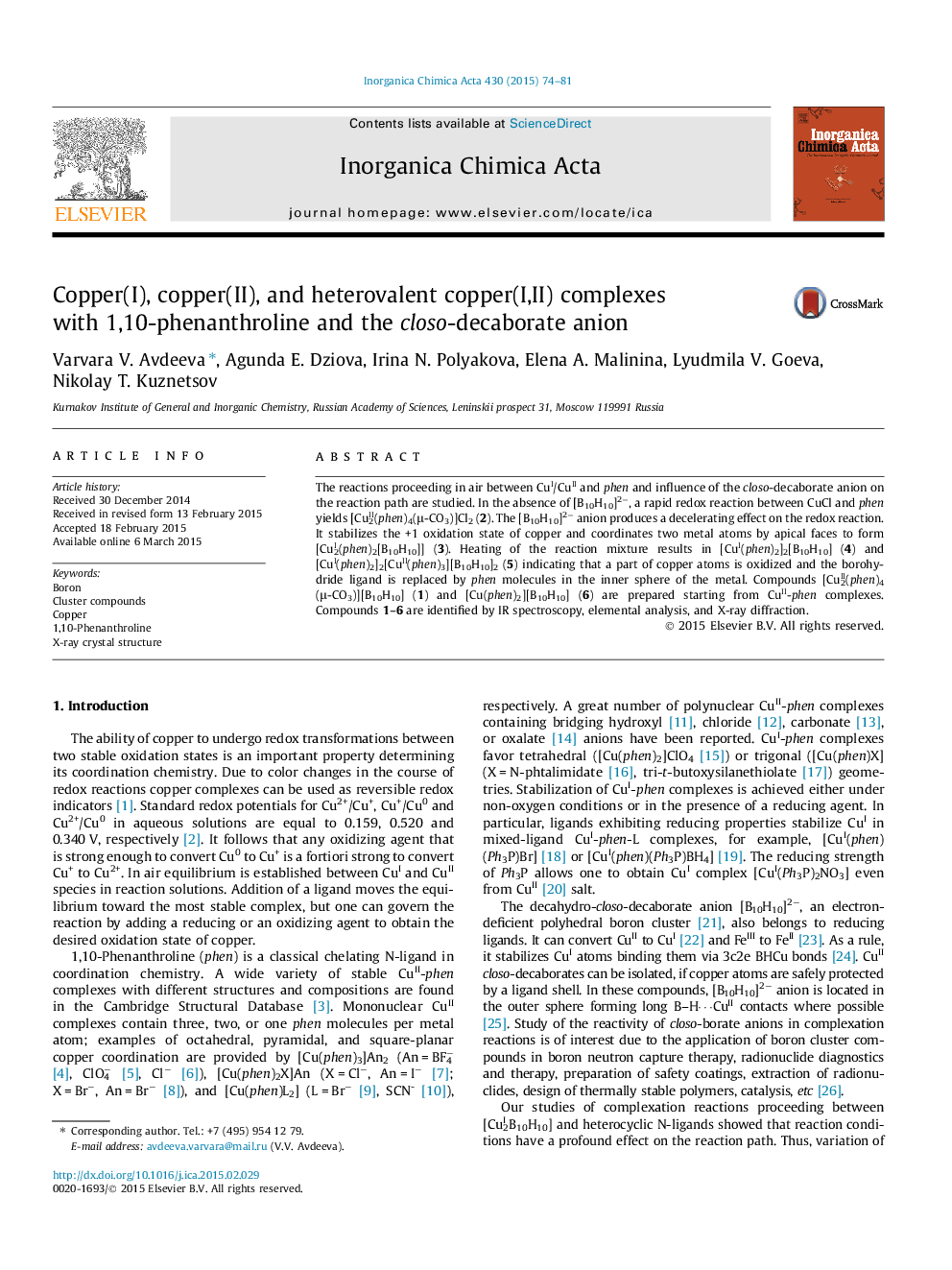| Article ID | Journal | Published Year | Pages | File Type |
|---|---|---|---|---|
| 1309111 | Inorganica Chimica Acta | 2015 | 8 Pages |
•Mono- and binuclear copper complexes with phen and [B10H10]2− were synthesized.•The effect of the [B10H10]2− on reaction path was studied.•The crystal structures were determined by X-ray diffraction.
The reactions proceeding in air between CuI/CuII and phen and influence of the closo-decaborate anion on the reaction path are studied. In the absence of [B10H10]2−, a rapid redox reaction between CuCl and phen yields [CuII2(phen)4(μ-CO3)]Cl2 (2). The [B10H10]2− anion produces a decelerating effect on the redox reaction. It stabilizes the +1 oxidation state of copper and coordinates two metal atoms by apical faces to form [CuI2(phen)2[B10H10]] (3). Heating of the reaction mixture results in [CuI(phen)2]2[B10H10] (4) and [CuI(phen)2]2[CuII(phen)3][B10H10]2 (5) indicating that a part of copper atoms is oxidized and the borohydride ligand is replaced by phen molecules in the inner sphere of the metal. Compounds [CuII2(phen)4(μ-CO3)][B10H10] (1) and [Cu(phen)2][B10H10] (6) are prepared starting from CuII-phen complexes. Compounds 1–6 are identified by IR spectroscopy, elemental analysis, and X-ray diffraction.
Graphical abstractComplexation reaction between copper(I), the closo-decaborate anion, and phen is studied under various reaction conditions. A number of copper(I), copper(II), and heterovalent copper(I,II) compounds with phen and the closo-decaborate anion are selectively synthesized and characterized by X-ray diffraction.Figure optionsDownload full-size imageDownload as PowerPoint slide
